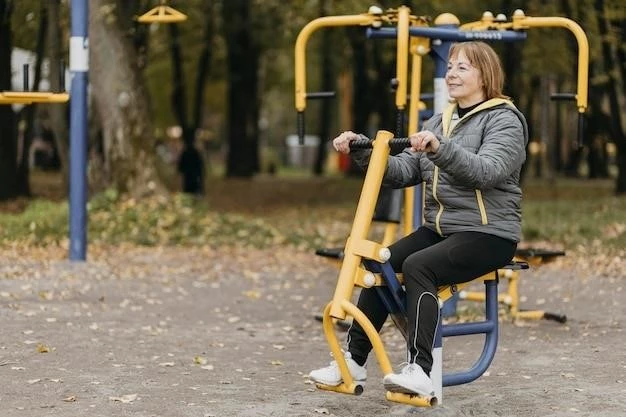Overview of Touraine-Solente-Golé Syndrome
The Touraine-Solente-Golé Syndrome, also known as Primary Hypertrophic Osteoarthropathy, is a rare autosomal recessive disorder with potential genetic variations in HPGD or SLCO2A1 genes.
Definition and Background
Touraine-Solente-Golé Syndrome, also referred to as Primary Hypertrophic Osteoarthropathy, is a rare genetic disorder known for its unique clinical features such as digital clubbing, periostosis, and skin thickening. It can be caused by mutations in the HPGD or SLCO2A1 genes٫ leading to a range of multisystemic manifestations affecting bones٫ skin٫ and joints.

Genetic Basis of Touraine-Solente-Golé Syndrome
The Touraine-Solente-Golé Syndrome, also known as Primary Hypertrophic Osteoarthropathy (PHO), is a rare genetic disorder caused by mutations in the HPGD or SLCO2A1 genes, presenting as a multisystemic autosomal recessive condition affecting bones, skin, and joints.
Inheritance Patterns
Primary Hypertrophic Osteoarthropathy (PHO), also known as Touraine-Solente-Golé Syndrome, follows an autosomal recessive pattern linked to HPGD or SLCO2A1 gene mutations. However٫ there are rare instances of autosomal dominant transmission within specific family lineages.
Clinical Features of Touraine-Solente-Golé Syndrome
Touraine-Solente-Golé Syndrome, also known as Primary Hypertrophic Osteoarthropathy (PHO), is characterized by a triad of manifestations, including digital clubbing, periostosis, and skin thickening (pachydermia). This multisystemic disorder affects bones, skin, and joints, leading to unique clinical presentations.
Triad of Manifestations
Primary Hypertrophic Osteoarthropathy (PHO), commonly known as Touraine-Solente-Golé Syndrome, presents a distinctive triad of manifestations including digital clubbing, periostosis, and skin thickening. These symptoms manifest as a unique combination affecting bones, skin, and joints, leading to characteristic clinical features.
Diagnostic Criteria for Touraine-Solente-Golé Syndrome
Diagnosis of Touraine-Solente-Golé Syndrome, also known as Primary Hypertrophic Osteoarthropathy, involves identifying pathogenic variants in the HPGD or SLCO2A1 genes and evaluating clinical signs such as digital clubbing٫ periostosis٫ and skin thickening. Additional tests may include genetic sequencing and imaging studies to confirm the disease.
Key Indicators for Diagnosis
Diagnosing Touraine-Solente-Golé Syndrome, also known as Primary Hypertrophic Osteoarthropathy, involves key indicators such as digital clubbing, periostosis, and skin thickening. Genetic testing for HPGD or SLCO2A1 mutations is crucial for a definitive diagnosis. Additional diagnostic tools include imaging studies and clinical assessment of the characteristic triad of manifestations.
Management and Treatment Approaches
The management of Touraine-Solente-Golé Syndrome, also known as Primary Hypertrophic Osteoarthropathy, typically involves a multidisciplinary approach focusing on symptom relief and supportive care. Treatment strategies may include surgical interventions to address specific complications, along with pharmacological interventions to manage pain and inflammation. Regular monitoring and follow-up evaluations are essential to address the evolving needs of individuals with this rare genetic disorder.
Surgical Interventions
Surgical interventions play a vital role in managing specific complications of Touraine-Solente-Golé Syndrome, such as addressing bone deformities and joint conditions. Procedures aim to alleviate symptoms like digital clubbing and periostosis, improving the quality of life for individuals affected by this rare genetic disorder.
Prognosis and Complications of Touraine-Solente-Golé Syndrome
Prognosis for Touraine-Solente-Golé Syndrome, a rare genetic disorder, varies based on disease severity and complications. Complications may include joint deformities, skin abnormalities, and functional impairments. Long-term outcomes depend on individual response to management strategies and the progression of the disease.
Long-Term Outlook
The long-term outlook for individuals with Touraine-Solente-Golé Syndrome, also known as Primary Hypertrophic Osteoarthropathy, varies depending on the progression of complications and individual response to treatment. Regular monitoring and comprehensive care are crucial to address potential challenges and improve the quality of life for affected individuals over time.
Research and Advances in Understanding the Syndrome
Recent research on Touraine-Solente-Golé Syndrome has focused on identifying genetic variations in HPGD or SLCO2A1 genes and exploring potential treatment strategies. Advances in understanding this rare disorder aim to improve diagnostic accuracy and therapeutic interventions for affected individuals.
Recent Studies and Findings
Recent studies on Touraine-Solente-Golé Syndrome have focused on genetic variations in HPGD or SLCO2A1 genes and potential treatment options. Emerging findings aim to enhance diagnostic precision and therapeutic efficacy for individuals affected by this rare genetic disorder.
Differential Diagnoses and Related Conditions
When assessing Touraine-Solente-Golé Syndrome, healthcare professionals must differentiate it from related conditions like pachydermoperiostosis and other hypertrophic osteoarthropathies to ensure accurate diagnosis and appropriate management. Clinical evaluation and genetic testing play crucial roles in distinguishing Touraine-Solente-Golé Syndrome from similar disorders.
Distinction from Similar Syndromes
It is crucial to differentiate Touraine-Solente-Golé Syndrome from related conditions like pachydermoperiostosis and other hypertrophic osteoarthropathies to ensure accurate diagnosis and tailored management approaches. Clinicians rely on a combination of clinical assessments, genetic testing, and imaging studies to distinguish Touraine-Solente-Golé Syndrome from similar syndromes with overlapping features, ensuring appropriate care and intervention strategies.
Impact on Quality of Life and Psychological Well-being
The Touraine-Solente-Golé Syndrome, characterized by a combination of skin changes, bone manifestations, and digital clubbing, can significantly impact individuals’ quality of life and psychological well-being. Coping with the physical symptoms and potential functional limitations may require psychosocial support and comprehensive care to address the holistic needs of affected individuals.
Psychosocial Aspects
The psychosocial impact of Touraine-Solente-Golé Syndrome can be significant, affecting the quality of life and well-being of individuals coping with the physical and emotional challenges posed by this rare genetic disorder. Supportive care, including counseling services and access to support groups, plays a crucial role in addressing the psychosocial aspects and enhancing the overall resilience of patients and their families.
Supportive Care and Resources for Patients and Families
Patients and families affected by Touraine-Solente-Golé Syndrome can benefit from access to supportive resources, including support groups and counseling services. These resources play a crucial role in providing emotional support, practical guidance, and a sense of community for individuals navigating the challenges of this rare genetic disorder.
Support Groups and Counseling Services
Support groups and counseling services play a vital role in providing emotional support, educational resources, and a sense of community for patients and families affected by Touraine-Solente-Golé Syndrome. These resources aim to address the psychosocial needs, enhance coping mechanisms, and promote overall well-being for individuals navigating the challenges associated with this rare genetic disorder.

Future Directions in Research and Treatment Strategies
Ongoing research in Touraine-Solente-Golé Syndrome focuses on further understanding the genetic underpinnings and exploring novel treatment modalities. Future directions aim to advance diagnostic techniques, develop targeted therapies, and improve overall outcomes for individuals affected by this rare genetic disorder. Collaborative efforts between researchers, clinicians, and patients are essential in driving progress towards more effective treatments and management strategies.
